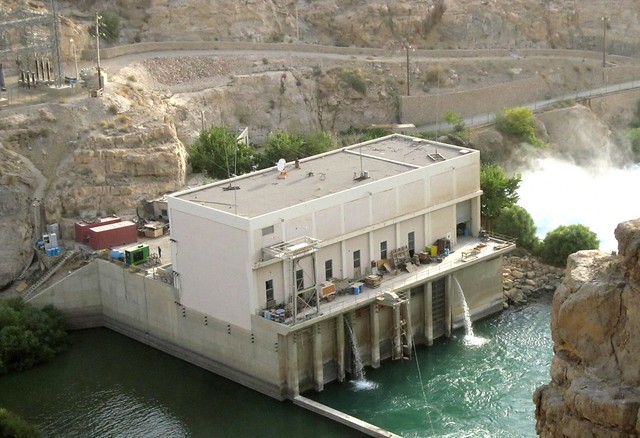Public Domain Photo:
Kajakai dam, built by Morrison-Knudsen Co. Photo by the United States AID.
Creative Commons Photo:

Citation:
Kajakai dam powerhouse. Photo by the United States Army Corps. of Engineers Public Affairs office
. used under creative commons license.



